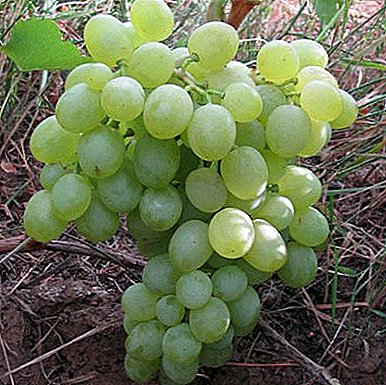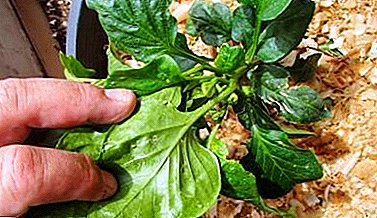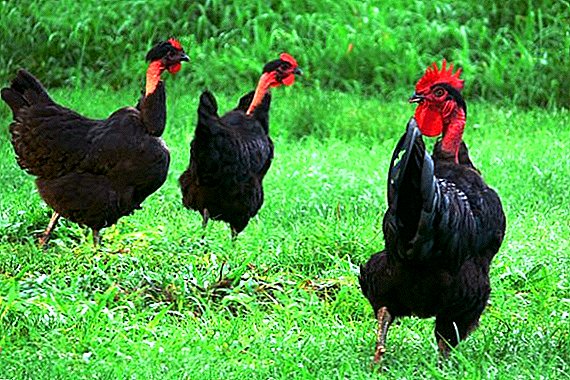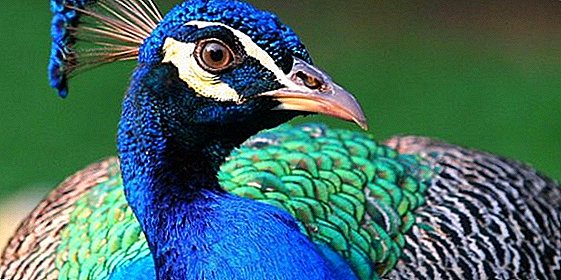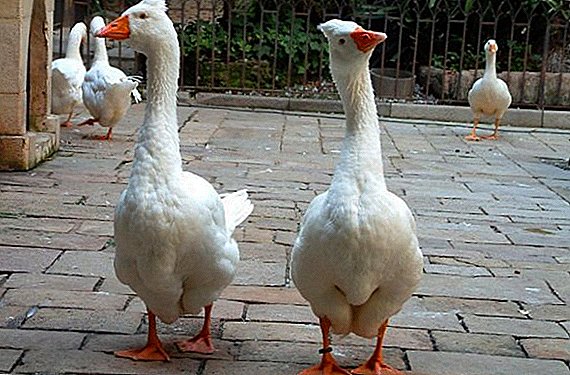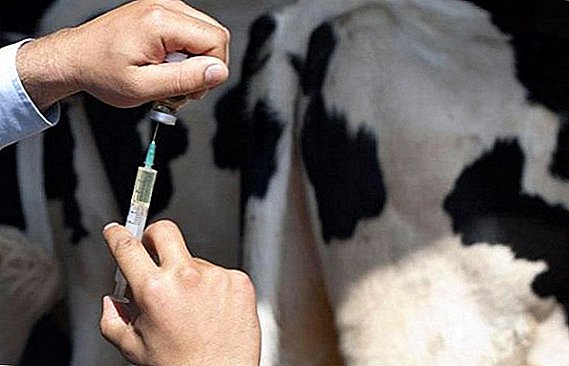 The achievements of modern veterinary medicine can successfully treat cattle (cattle) from a variety of diseases, as well as their consequences. Thanks to this, farmers were able to optimize the care of their female rats, who are often the main source of food and material income. However, for the proper use of veterinary products you need to have information about their main characteristics.
The achievements of modern veterinary medicine can successfully treat cattle (cattle) from a variety of diseases, as well as their consequences. Thanks to this, farmers were able to optimize the care of their female rats, who are often the main source of food and material income. However, for the proper use of veterinary products you need to have information about their main characteristics.
Anti-mastitis drugs for cows
Mastitis is an inflammatory disease of the mammary glands (udder) caused, as a rule, by known microorganisms: staphylococci and streptococci.
A number of negative factors can provoke this disease in cows:
- unfinished dressing after calving;
- mechanical damage;
- non-compliance with the requirements for maintenance and hygiene standards;
- complications after the childbirth.
 Symptoms:
Symptoms:- the udder hardens to the touch, reddens and becomes hot;
- the cow becomes depressed and apathetic;
- body temperature rises above 41 ° C;
- Depending on the variety, mastitis can cause purulent discharge from the udder.
 Symptoms of the disease manifest themselves quickly, and so that the problem does not develop from acute to chronic, it is important for the farmer to notice them in time and seek help from a specialist who will determine the necessary course of treatment.
Symptoms of the disease manifest themselves quickly, and so that the problem does not develop from acute to chronic, it is important for the farmer to notice them in time and seek help from a specialist who will determine the necessary course of treatment.
Did you know? In terms of numbers, cows rank second among mammals, after humans. If you count all the individuals on Earth, they will be almost 1.5 billion. In some Latin American countries there are about 9 cows per 10 people, but in Australia - and the above, there are 40% more than people.
Vaccamast
 The drug is an oily suspension of a light yellow shade. In addition to a special prolonged base, the drug consists of prednisolone, dioxidine and lincomycin hydrochloride.
The drug is an oily suspension of a light yellow shade. In addition to a special prolonged base, the drug consists of prednisolone, dioxidine and lincomycin hydrochloride.
The drug is administered intracisternally, in the indicated dosage:
- with subclinical manifestations - 10 ml once a day, for 3 days;
- with clinical - 10 ml once a day, for 4-5 days.
Read about the causes and methods of treatment of mastitis in cows, as well as find out how dangerous purulent mastitis is in cattle.
Dienomast
 Antibacterial oily yellowish suspension with a nonspecific odor. Active ingredients:
Antibacterial oily yellowish suspension with a nonspecific odor. Active ingredients:
- dioxidine - 8.75 mg;
- gentamicin sulfate - 17.5 mg.
Dienomast is administered intracisternally, and the dosage is calculated based on the form of mastitis:
- subclinical, serous or catarrhal - 5 ml 1 time per day, for 3-4 days;
- purulent-catarrhal - the first injection of 10 ml, then 5 ml every 24 hours, during the week.
Important! Before entering the suspension must be milked from the udder purulent secretion, and the nipple disinfected with ethyl alcohol (70%).
After the course, the milk is usable after one or two weeks.
Cobactan
Another name is cefkinoma sulfate. Injective suspension for intracisternal administration, cephalosporin group. The drug belongs to the 4th generation and successfully fights with a variety of gram-positive and gram-negative bacteria. Depending on the severity of the case, different schemes of application are recommended:
Scheme 1 (calculated on the weighted history and complex course of the disease):
- Dexafort intramuscularly - 10 ml, once;
- Cobactan (2.5%) intramuscularly - 20 ml twice, with an interval of 24 hours;
- Cobactan LC - 1 dose (syringe) in the affected area of the udder, with a time interval of 12 hours until full recovery.
 Scheme 2 (designed for a cow with a mass of at least 600 kg):
Scheme 2 (designed for a cow with a mass of at least 600 kg):
- Dexafort intramuscularly - once 10 ml;
- Cobactan LC - 1 dose (syringe) in the affected area of the udder, with a time interval of 12 hours.
Kolimast (Neomycin)
Aminoglycoside antibiotic with a bactericidal type of antimicrobial action. It is a light yellow oily suspension consisting of neomycin sulfate (40,000 μg / g) beeswax and petroleum jelly.
The introduction of the drug should be intracisternally:
- subclinical, serous or catarrhal mastitis - 5 ml 1 time per day, 4 days;
- purulent-catarrhal - once 10 ml 1 day, then 5 ml with an interval of 24 hours, during the week.

Laktobay
It has a suspension form consisting of the active ingredients: ampicillin (75 mg) and cloxacillin (200 mg). Cloxacillin is able to inhibit the resistant group of staphylococci, resistant to penicillin G. Treatment regimen: 1 dose (injector 5 g) administered in the affected quarter of the udder 3 times with an interval of 12 hours.
Immediately before the introduction, the udder and nipple of the animal should be disinfected. The tip of the injector to bring to the defeat carefully, so as not to infect it with a painful microflora. 
Mamikur
Multicomponent antibacterial agent in the form of a suspension. One syringe contains:
- neomycin,
- Cloxacillin,
- dexamethasone,
- trypsin.
Auxiliary components: white paraffin, petroleum jelly in liquid form. Before the introduction of the drug, it is recommended to milk and dispose of the milk from the affected quarters of the udder, treat the nipple with a disinfectant solution.
Order of use of the medicine: The tip of the injector is placed in the papillary canal, the contents of the syringe (10 ml) are gently squeezed inside. After manipulation, the injector is removed, and the nipple is pinched by fingers for 1-2 minutes.
It is useful to learn about the features of the structure of the udder of a cow, how it is processed before and after milking, and what diseases of the udder can overtake the cows.
For a better distribution of Mamikur, it is recommended to make a light massage to the nipple and the para-region. The drug should be administered three times with an interval of 12 hours.
Mamifort
 Intraflammatory suspension consisting of an effective combination of semi-synthetic penicillins, 75 mg of ampicillin sodium salt and 200 mg of cloxacillin.
Intraflammatory suspension consisting of an effective combination of semi-synthetic penicillins, 75 mg of ampicillin sodium salt and 200 mg of cloxacillin.
The drug has a negative effect on almost all pathogens of mastitis in cattle and has no contraindications.
Recovery occurs after 3 injections, carried out every 12 hours.
Mastilek
It is an oily white or yellowish suspension of the cephalosporin group, containing cefalexin monohydrate (35 mg) and gentamicin sulfate (3.5 mg in 1 ml). Intracisternally introduced into the affected part of the udder, after disposal of contaminated milk and disinfection of the nipple.
Recommended dosage: 1 syringe (10 ml) three times, every 12-24 hours (depending on the severity of the disease).
After the procedure, it is necessary to make a gentle nipple massage from top to bottom. 
Mastodinon
Pharmacotherapeutic group: antimicrobial agent in combination. Contains a complex of high-speed antibiotics:
- novobiocin,
- neomycin,
- penicillin procaine,
- dihydrostreptomycin.
Hormonal drugs
Hormone therapy for cattle helps to quickly adjust the function of reproduction of offspring and subsequent lactation processes in females. 
Dinoplus
A hormonal drug based on cloprostenol (a synthetic analogue of prostaglandin F2a). The principle of action - luteolizing yellow and persistent yellow body of the ovaries, normalizes the work of appendages, causes ovulation and starts the process of estrus in cows.
The introduction of Dinoplus is carried out subcutaneously or intramuscularly: 2 ml per individual. To synchronize sexual hunting the same dose of the drug must be repeated after 11 days.
Proline
Due to the active hormonal substance (dinoprost tromethamine), the drug synchronizes the sexual cycle, treats pyometra, chronic metritis and endometritis, also stimulates calving or gradually interrupts pregnancy.
 Treatment regimen: 5 ml per cow intramuscularly for all indications.
Treatment regimen: 5 ml per cow intramuscularly for all indications.
If there is a persistent body, Prolin is injected once, and insemination takes place in 2-4 days. To synchronize sexual hunting, the drug is administered twice 35 days after calving with an interval of 12 days, insemination is performed 90 hours after the second injection.
Primalact
 Combined antibacterial drug. Ingredients: cefotaxime sodium (cephalosporin antibiotic 3 generations), neomycin (aminoglycoside), prednisolone (synthetic glucocorticosteroid). It is indicated for mastitis and endometritis of various forms.
Combined antibacterial drug. Ingredients: cefotaxime sodium (cephalosporin antibiotic 3 generations), neomycin (aminoglycoside), prednisolone (synthetic glucocorticosteroid). It is indicated for mastitis and endometritis of various forms.
The procedure for entering intrauterine or intracisternal. Application:
- subclinical mastitis - 5 ml 1 time per day, for 2-3 days;
- clinical - 5 ml, for 3-4 days.
- acute or subacute form of endometritis - 20 ml intrauterine, 2-3 times with an interval of 24 hours. 2 weeks after calving.
Important! Before intrauterine administration of Primalact, it is imperative that sanitary treatment of the external genital organs and the root of the tail is necessary. If necessary - release the uterine cavity from inflammatory exudate.
Erimast
 Antibacterial drug, which is a transparent oily emulsion. The main active ingredient is erythromycin, auxiliary - prolonging base. The drug is used to treat mastitis of various types and degrees of severity. Introduced intracisternally.
Antibacterial drug, which is a transparent oily emulsion. The main active ingredient is erythromycin, auxiliary - prolonging base. The drug is used to treat mastitis of various types and degrees of severity. Introduced intracisternally.
The optimal scheme of application:
- with subclinical, catarrhal or serous mastitis - 5 ml 1 time per day, for 4 days;
- with purulent-catarrhal form - the first injection of 10 ml, then 5 ml with a daily interval for 5-6 days.
Milk products for cows
Unfortunately, the usual for farmers tablet or injection forms of milk-based drugs do not exist in nature. However, on the rich farmer's market, you can find several types of balanced supplements and complete feeds that maximize lactation:
- French feed supplement LevusellR SC - contains dry live yeast Saccharomyces cerevisiae cells that suppress the activity of a wide range of pathogenic and conditionally pathogenic microflora of the rumen. In addition to a significant increase in productivity, stabilizes the pH of the rumen, reducing the risk of acidosis, improves the anaerobic state in the rumen and the digestibility of feed components.
- Cake and sunflower meal - Livestock breeders have long been known as good "milky" feed. High-protein, containing a large amount of energy - they themselves are necessary for cows, replenishing nutrients in their bodies in their bodies, and also provide the optimal basis for the introduction of premixes and other feed additives.
- Vitfoss VM-1 Premix from Denmark - provides a high content of vitamins and minerals in the form easily absorbed by cows and in ratios that are optimal for their physiology, which allows increasing productivity and reliably strengthening the immune system of animals.

Preparations for running cows
Running a cow — or, in other words, ending milking for a normal pregnancy and childbirth — is considered quite troublesome for a farmer. Before insemination and calving, an animal needs to have a good rest, gain strength, accumulate the necessary mass and replenish energy as much as possible. And so that the launch itself took place without any problems, veterinarians often write out auxiliary and prophylactic drugs.
Orbenin EDC
Antibacterial agent in the form of a liquid suspension, applied intracisternally. The drug includes active and auxiliary components:
- 600 mg cloxacillin,
- stearic acid
- aluminum stearate
- mineral oil.
 Orbenin is administered to the cow once for the prevention of mastitis, after the last milking, before transfer to the dry period, but no later than 42 days before calving.
Orbenin is administered to the cow once for the prevention of mastitis, after the last milking, before transfer to the dry period, but no later than 42 days before calving.Find out how many days before the calf a cow walks.
Nafpenzal DC
 Like the drug Orbenin, Nafpenzal is used as a preventive measure against mastitis. The drug is an oily yellowish suspension and consists of:
Like the drug Orbenin, Nafpenzal is used as a preventive measure against mastitis. The drug is an oily yellowish suspension and consists of:
- procaine benzylphenillicine,
- dihydrostreptomycin (in the form of sulfate),
- nafcillin,
- liquid paraffin
- aluminum distearate.
Brovamast S
It is used in the first week after the launch of the female for the prevention and treatment of subclinical and chronic mastitis of cows during the period of dry. For prophylaxis, 5 ml is injected once into each udder lobe, 10 ml for treatment. Before use, the drug should be heated to 35-37 ° C.
Mastometrin
Injection solution Mastometrin with grass extractor is successfully used for inflammatory processes and various dysfunctions of the reproductive system of cows. This drug is indicated for endometritis, vaginitis and mastitis. Composition:
This drug is indicated for endometritis, vaginitis and mastitis. Composition:
- bows meadow,
- Juniper Cossack,
- dry distillation product of meat and bone meal (ASD-2),
- hydrochloric acid,
- sodium chloride.
We advise you to learn how to run a cow before calving.
The drug is administered subcutaneously or intramuscularly, the duration of treatment and the exact dosage are set by the veterinarian.
Dbailiva dyarochka
 White homogeneous ointment of dibailiva milker is applied externally for the treatment of cows:
White homogeneous ointment of dibailiva milker is applied externally for the treatment of cows:
- with scratches;
- cuts;
- burns;
- cracks;
- frostbite skin udder and milkings;
- dermatitis caused by a lack of vitamin A;
- eczema caused by metabolic disorders.
Consists of vegetable and auxiliary components:
- retinol acetate,
- tocopherol acetate,
- chamomile extract
- glycerol,
- ointment base.
Drugs for the treatment of endometritis
Endometritis is a common inflammation that occurs on the uterine mucosa, which most often occurs after childbirth.
The causes of the disease are often:
- unsanitary conditions in the barn;
- infectious complication in a cow after an abortion;
- serious disease in the whelp (chlamydia, brucellosis).
Read how to treat endometritis in cows.Like other ailments, endometritis is divided into several varieties that are successfully treated with modern drugs.
Oxytocin
 Hormonal drug, is a clear sterile solution for injection. Introduction of Oxytocin is performed intramuscularly or subcutaneously in order to restore the ability of the uterus to contract normally.
Hormonal drug, is a clear sterile solution for injection. Introduction of Oxytocin is performed intramuscularly or subcutaneously in order to restore the ability of the uterus to contract normally.
However, there is one nuance: in the acute course of the disease, hormonal drugs are first used, and only after them (after 12 hours) is oxytocin therapy.
Carbacholine
Available in the form of a white crystalline powder in a vial (1 ml) with a faint odor, or in tablets (0.01-0.001 mg). The drug is administered subcutaneously in the form of a 0.01% solution three times at intervals:
- in case of detention of the placenta - 12 hours;
- with endometritis and subinvolution of the uterus - 48 hours;
- with ovarian cysts - 72 hours.
Important! Carbacholine belongs to the highly toxic group A, so even a slight dose excess can lead to severe poisoning in the female cow.
Metrin
Available in the form of a liquid intramuscular emulsion for injection, which helps with uncomplicated endometritis in cattle. Metrin is administered 6-10 hours after delivery, at a dose of 10 ml per individual. The course of drug treatment is individually selected by the attending veterinarian. 
Rifapol
Is a complex antimicrobial and anti-inflammatory agent, which consists of antibiotics: polymyxin and rifampicin. It is a liquid suspension of red-brown color. It is used for various infections - salmonellosis, colibacteriosis and other diseases associated with endometritis.
The drug is administered orally twice a day, at a dose of 1 ml / kg of animal weight, for 2-4 days.
Preparations for cattle fascioliasis
Fascioliasis of cows is a dangerous and widespread helminthic disease caused by fasciola parasites affecting the liver. The disease can cause irreparable damage to the health of animals and lead to a decrease in milk yields.
Learn how to deal with fascioliasis in cattle.
The list of the most common and effective drugs for fascioliasis:
- Closantel - sterile solution. The drug has a broad antiparasitic spectrum of action. For full recovery, 1 ml of each 1 kg is injected intramuscularly into the whetskin once.
- Politrem. Suspension is used with the calculation: for every 1 kg of body weight - 10 mg of the drug.
- Fazinex - suspension for oral administration. The medicine should be poured into the oral cavity of the cow once, based on the proportion: 8-12 mg per 1 kg of weight.
Cure for diarrhea
Diarrhea in cows is quite common. Diarrhea can indicate a variety of diseases of the gastrointestinal tract, as well as poisoning or infectious diseases. First of all, the treatment of the animal should depend on the results of the prescribed tests, but in any case, when the first signs of illness manifest themselves, measures must be taken to prevent dehydration. 
Metronidazole
It is a colorless yellowish liquid, which successfully exhibits an antiprotozoal, bactericidal and antibacterial effect against the simplest microbes.
Recommended dosage: 1 ml per 10 kg of live weight intramuscularly.The drug must be administered daily until the symptoms disappear, approximately 3-5 days.
Norsulfazole
The tool has high antimicrobial activity against:
- Streptococcus
- meningococci
- gonococcus,
- pneumococci,
- Escherichia,
- salmonella and other dangerous microorganisms.
 It is produced in the form of a yellowish powder, which is diluted in water for injection and injected intramuscularly 2-3 times a day for 1 individual per dose - from 10 to 25 g. The veterinarian sets the exact dosage.
It is produced in the form of a yellowish powder, which is diluted in water for injection and injected intramuscularly 2-3 times a day for 1 individual per dose - from 10 to 25 g. The veterinarian sets the exact dosage.
Trisulfone
Combined chemotherapeutic drug (white suspension) with a broad antimicrobial spectrum of action. In addition to bacterial diarrhea, Trisulfon can cope with infections of the digestive, respiratory, and urogenital systems.
Most often, the drug is fed to young calves with water, for 5 days, in a dosage of 15 to 30 mg of active substance per 1 kg of body weight.
Read how to treat diarrhea in calves with antibiotics and folk remedies.
Sintomycin
Often used for diarrhea with blood. The tool will quickly eliminate the painful condition if it is introduced into clean water and given to the cow to drink 2 times a day, in the morning and at night. If symptoms persist, treatment should be extended to 3 days.
Anthelmintic drugs for cattle
Every conscientious farmer knows that at least twice a year, cows should be given prophylactic drugs for worms. Typically, this method of protection against parasites works well, but sometimes unplanned helminth lesions occur, which manifest themselves far from immediately.
Albendazole
The tool is able to quickly reduce the parasitic activity of the majority of helminth agents. Also a wide spectrum of action concerns nematodes, some cestodes and trematodes. Form release: powder, gel, tablets, suspension.  The dosage is calculated based on the weight of the cow and the specific lesion:
The dosage is calculated based on the weight of the cow and the specific lesion:
- pulmonary or intestinal nematodoses - 75 mg;
- chronic fascioliasis - 100 mg;
- Ascariasis - 100 mg.
Brovadazole
 It has the form of white or grayish cylindrical tablets. One piece (1 g) contains 50 mg of fenbedazol (active ingredient), which has high anthelmintic activity against many parasites.
It has the form of white or grayish cylindrical tablets. One piece (1 g) contains 50 mg of fenbedazol (active ingredient), which has high anthelmintic activity against many parasites.
The treatment regimen depends on the type of worms:
- dicroceliosis - 6.6 mg, one-time;
- Dictyokaulez - 2 mg, one time;
- cysticercosis - 5 mg for three days.
Kombitrem
The activity of the drug is based on the interaction of two anthelmintics: albendazole and triclabendazole. Due to the action of the active components, Kombitrem effectively copes with the mature and larval stages of fasciol, dirocelium and nematode. It is most appropriate to use in the early stages of invasion.
It will be useful for novice pastoralists to learn how to remove worms from cows and calves.
Treatment regimen: one time with pure water - 1 ml of the drug per 10 kg of body weight of the animal.
Ivermectin
Universal anthelmintic drug that destroys all varieties of worms. Available in the form of a solution for injection. Ivermectin is administered once, subcutaneously, in a scapula - 1 ml per 50 kg of body weight of the cow. 
Levamisole
The remedy is mainly used against nematodes, it also treats ascariasis, cooperiosis, hemonhoz, bunostomosis, etc. The therapeutic dose is 7.5 levamisole per 1 kg of animal weight.
Trematozol
Available in the form of an emulsion of light yellow color. It is combined from two highly effective active ingredients: oxyclozanide and pyrantel, which have a broad spectrum of activity in relation to trematodosis and nematodoza.
Mode of application: 1 ml per 10 kg body weight of a cow, once with pure water.
Antiparasitic drugs for cattle
From time to time it is important to check the cows hair for various parasitic activities. Lice and ticks not only drive animals into stress and reduce their productivity, but also lead to the development of various infectious diseases. Therefore, noticing the characteristic signs of the population, it is necessary to resort to using the best antiparasitic drugs. 
Popular Lice Remedies
Contrary to popular belief, lice and mites are not related species. While lice are insects, mites belong to the arachnid class. Because of this, the remedies for them are not the same.
Ivermek Creolin (1%)
It is recommended to enter intramuscularly in 1 ml per 50 kg of body weight.
Chlorpinene (1.5%)
The emulsion is applied externally as larvae or adult lice are detected.
Chlorophos
Aqueous solution for external lubrication of the neck, head, ridge and the area around the tail. 
Stomazan, Neostomazan and Ectomin-K
Antiparasitic solutions, pre-dissolved in water and used externally in the cervical region.
Vermec
The therapeutic drug of a broad spectrum, destroys all ectoparasites. Injected by injection.
Learn how to get lice from cows.
Tick Drugs
These substances are usually produced in a convenient aerosol or water-soluble form:
- Acrodex;
- Alezan;
- Butox;
- Centaur;
- Entomozan-S;
- Proteid.
 Also, in the old manner, farmers often use a dust solution (7.5%), which for many years does not lose its effectiveness.
Also, in the old manner, farmers often use a dust solution (7.5%), which for many years does not lose its effectiveness.Did you know? The average lifespan of cows is 20 years. However, there were cases when cows lived 30-35 years. Bulls live a little less, only 15-20 years.
In order to properly maintain cattle on a farm, it is necessary not only to comply with all the necessary maintenance requirements, but also to provide for all sorts of risks. The knowledge of possible diseases and methods of their treatment allows to meet problems fully armed. But we should not forget that the decisive word in this matter remains for a qualified veterinarian.




